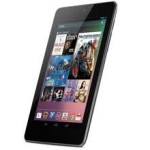 It’s been a while since I upgraded my primary desktop machine so I thought it was time to spend a little coin. While I did install a SSD back in August 2012 I thought it was time for a completely new machine. When I get a new machine I usually pass my old one down to the wife and then her old machine to the kids and so on this way everyone has a little something to be excited about. This time around I decided to splurge and go for what I would probably consider a fairly high-end build. I also ordered a new case and power supply so I could have both machines running at the same time and could take my time migrating the data and content from the old machine to the new machine.
It’s been a while since I upgraded my primary desktop machine so I thought it was time to spend a little coin. While I did install a SSD back in August 2012 I thought it was time for a completely new machine. When I get a new machine I usually pass my old one down to the wife and then her old machine to the kids and so on this way everyone has a little something to be excited about. This time around I decided to splurge and go for what I would probably consider a fairly high-end build. I also ordered a new case and power supply so I could have both machines running at the same time and could take my time migrating the data and content from the old machine to the new machine.
Here’s what I purchased from NewEgg;
- Intel Core i7-3770K Ivy Bridge 3.5GHz (3.9GHz Turbo) LGA 1155 77W Quad-Core Desktop Processor Intel HD Graphics 4000
- ZALMAN CNPS9900ALED 120mm 2 Ball Low-noise Blue LED CPU Cooler
- 2 x G.SKILL Ripjaws X Series 8GB (2 x 4GB) 240-Pin DDR3 SDRAM DDR3 2133 (PC3 17000) Desktop Memory Model F3-17000CL9D-8GBXM
- GIGABYTE GA-Z77X-UD5H LGA 1155 Intel Z77 HDMI SATA 6Gb/s USB 3.0 ATX Intel Motherboard
- SAMSUNG 840 Pro Series MZ-7PD256BW 2.5″ 256GB SATA III MLC Internal Solid State Drive (SSD)
- Western Digital WD Black WD2002FAEX 2TB 7200 RPM RPM 64MB Cache SATA 6.0Gb/s 3.5″ Internal Hard Drive – OEM
- LITE-ON Black 12X BD-R 2X BD-RE 16X DVD+R 12X DVD-RAM 8X BD-ROM SATA 12X Blu-ray Burner with Blu Ray 3D Feature IHBS112-04 – OEM
- Antec P280 Black Super Mid Tower Computer Case
- CORSAIR HX Series HX850 850W ATX12V 2.3 / EPS12V 2.91 SLI Ready CrossFire Ready 80 PLUS GOLD Certified Modular Active PFC Power Supply
- Microsoft Windows 7 Home Premium SP1 64-bit – OEM
I thought about going with water cooling but eventually decided to stick with air cooling and purchased the Zalman CNPS9900ALED .The Zalman heatsink is insanely huge, words just don’t do it justice. While the Antec P280 case is fairly large itself, the Zalman heatsink quickly fills the case making it look small. Thankfully everything arrived within a few days of ordering it and it took me about 2 days to assemble the new machine. I performed the assembly in the following order;
- Install Corsair power supply into Antec P280 case
- Install G.Skill memory onto Gigabyte motherboard
- Install Intel Core i7 CPU onto Gigabyte motherboard
- Install Zalman heatsink onto Intel Core i7 CPU and Gigabyte motherboard
- Install Gigabyte motherboard into case
- Install Samsung 840 SSD into case
- Install Western Digital hard drive into case
- Install MSI 6950 video card into Gigabyte motherboard and case
- Wire everything together, including all power leads, front panel LEDs, USB headers, SATA connectors, etc.
The hardest part was figuring out how to mount the Zalman CPU heatsink which probably took about 20-35 minutes. Thankfully everything was working right out of the box and I had no DoAs or RMAs to contend with. Obviously I stayed with Windows 7 64-bit having heard all about the issues with Windows 8.
That leaves me with the following build;
- Windows 7 Service Pack 1 64-bit
- Intel Core i7-3370K @3.5Ghz
- 16GB G.Skill Ripjaws DDR3 2133 memory (4 sticks)
- Gigabyte GA-Z77X-UD5H motherboard
- MSI R6950 Twin Frozr II OC Radeon HD 6950 2GB
- 256GB Samsung 840 Pro Series SSD
- 2TB Western Digital Black SATA 3 hard disk
- LITE-ON Blue Ray DVD burner
- Antec P280 case
- CORSAIR HX Series HX850 power supply
- Logitech G15 keyboard
- Logitech G5 mouse
- Logitech C910 webcam
- 2 x ASUS 27″ LCD display
- Canon i2600 InkJet Printer
Cheers!








